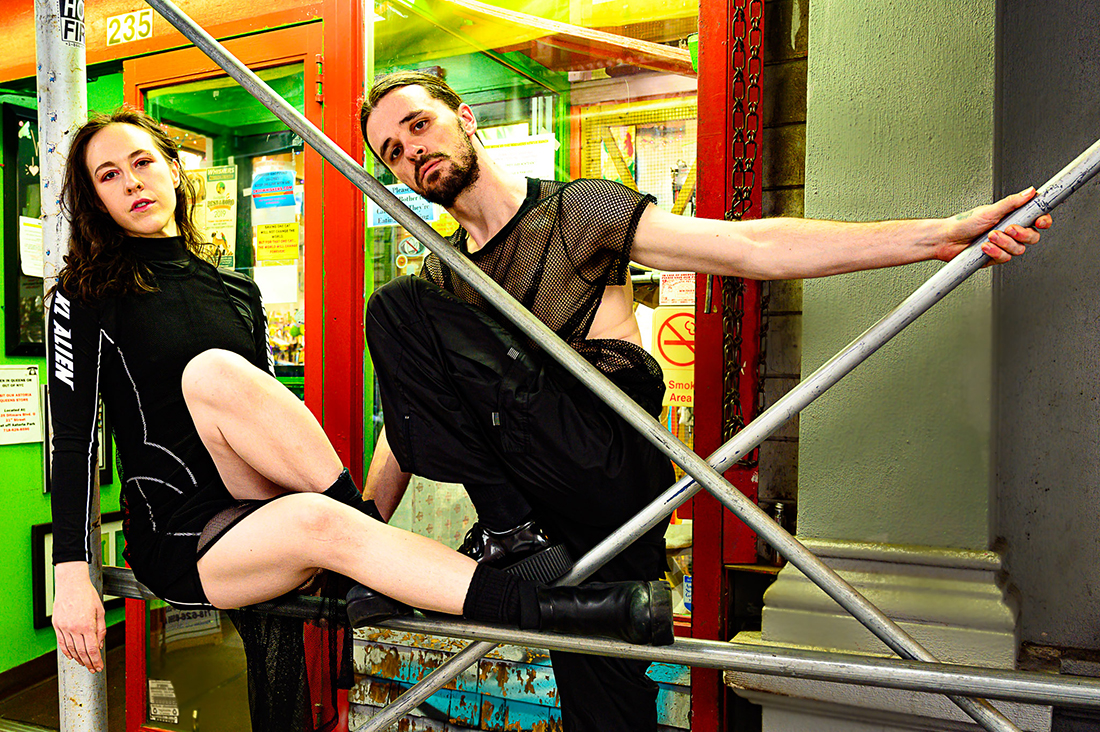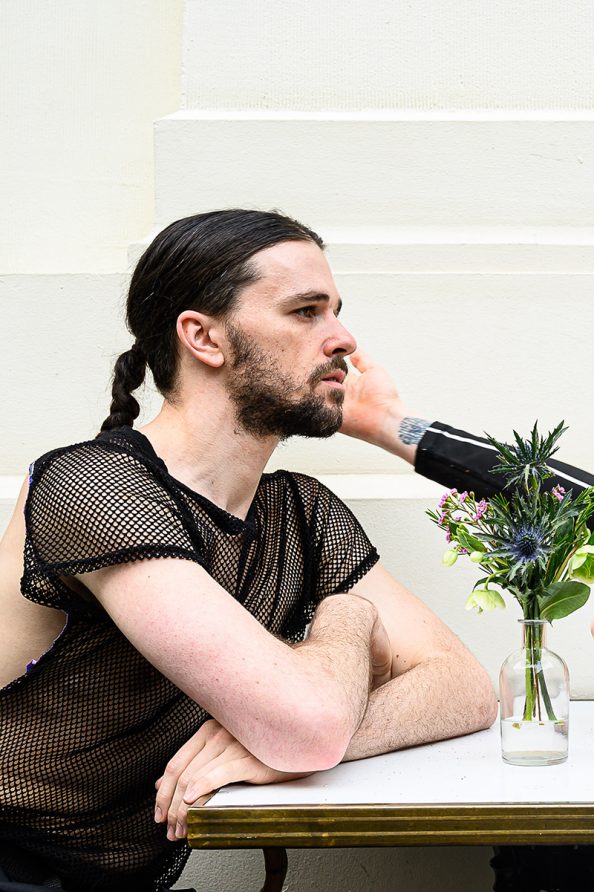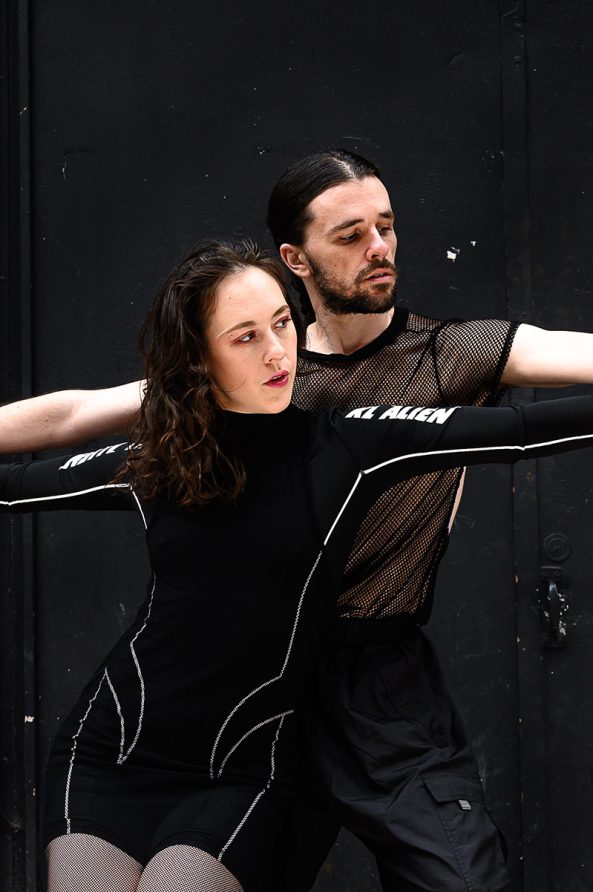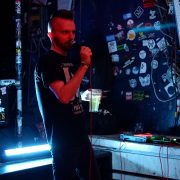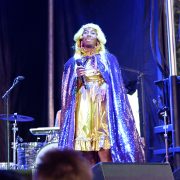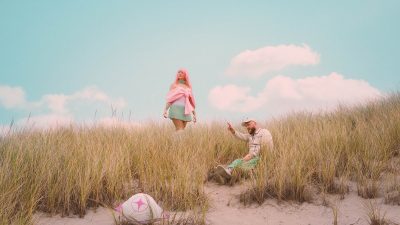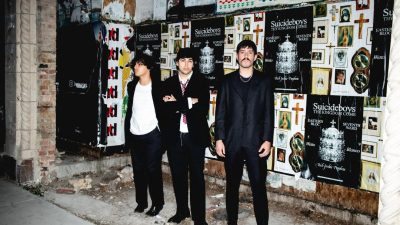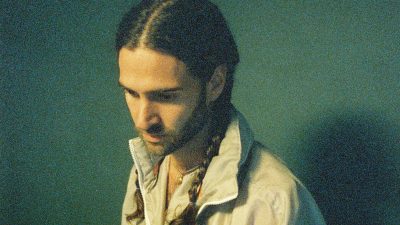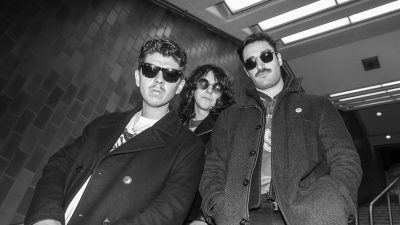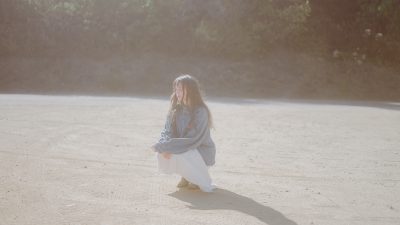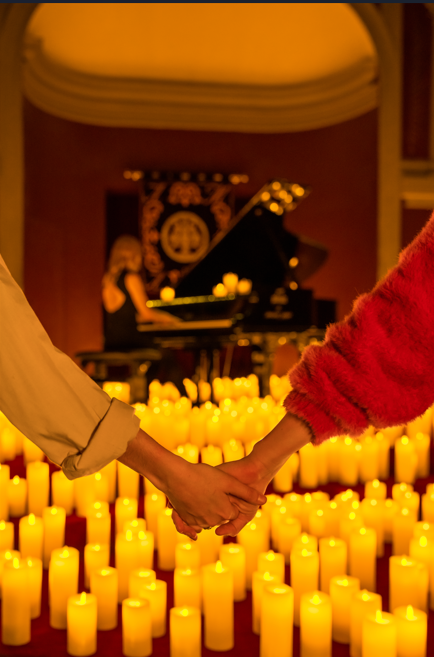slowdanger on how they interlace empathy, nature, virtual reality, and a dirty, grainy rust belt sound
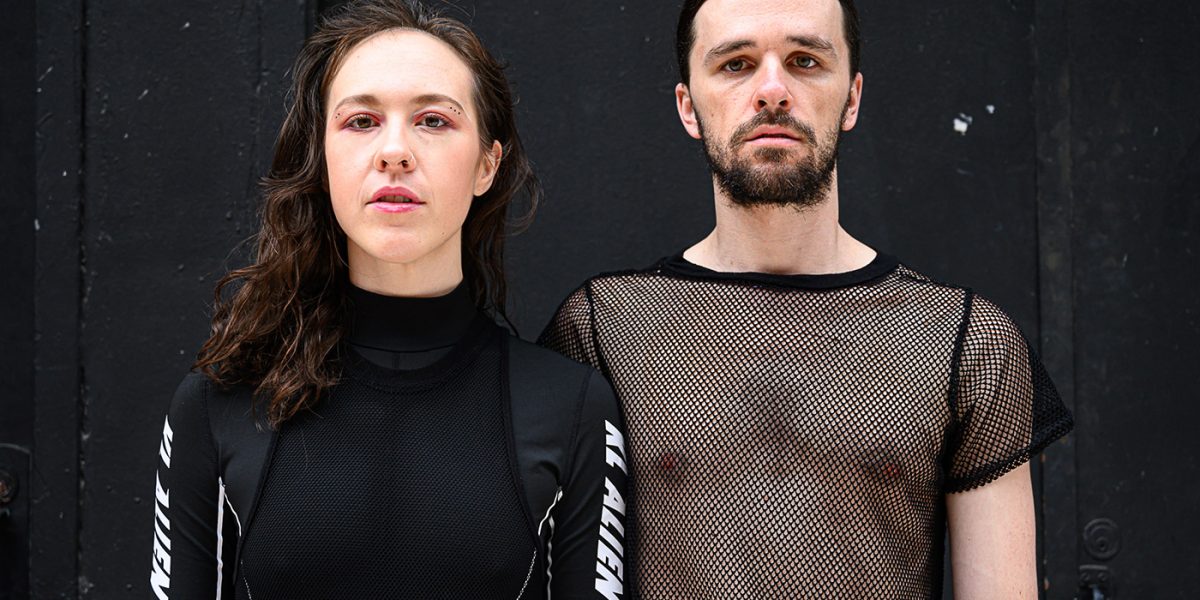
text by Haley Paula Stein | photos by Alana Mayer
slowdanger, a Pittsburgh-based collaboration between dancers Anna Thompson and Taylor Knight, constructs at once an intellectual and supremely visceral ambient sound. Their songs are captivating and strange. Soft, throbbing beats and found material echo alongside Thompson’s ethereal vocals creating a resonating, soulful kind of downtempo electronica. When sound is coupled with visuals, in their music videos and live performances, the concept of slowdanger is more fully realized. This pair of abstract futurist dancers tell stories through vibration and movement. Their message touches on the topics of the natural world meeting modernization, building something new, yet inherent and familiar, and rebirth from the rubble of leftover constructions and ideas.
June has been a very busy month for the band, full of traveling, teaching, producing, arranging, sampling, editing, and preparing for their next big creative moves at the junction of music, dance, and tech innovation. Lucky for us Anna and Taylor found some time to chat with us and even hang out for a photo shoot.
Haley Stein: How did slowdanger begin?
Anna Thompson: It kind of happened naturally. We started out making dances together when we were both in college, and we wanted to make our own scores. We played around with samples and field recordings from our phones. Then there was this natural process of meeting and engaging with people in our community, collaborating, while simultaneously working on our own sound and dance. And we are starting to feel how these worlds can’t be separate.
Taylor Knight: We were especially driven to work together because the environment of our university felt somewhat fixed on what it meant to be a dancer. Anna and I had a shared vision of flipping the traditional idea of being a dancer by incorporating the use of our voices and drum machines.
HS: As dancers, how does movement influence the way you create music and soundscapes?
AT: We wanted to create [a] sound that made us want to move. That’s kind of where our sound comes from, thinking about the vibrations that signal our bodies to move.
TK: I started out dancing at a very young age as a tap dancer. I always related movement and sound in a special way. Then this idea of vibration, that vibration is everywhere. Even in silence, there is still this vibration. Vibration connects us to the audience or the observer. We can harness vibrations and be a conduit to let that pulse or that drive off that vibration come out in movement. Anna and I focus on the environment a lot on stage. People relate to sound as a connection to place so easily. You hear a certain sound and it takes you into another world. As Anna was saying, we use a lot of field recordings and ambient sound to invite the audience into other worlds. Space is also a vibrational tool.
AT: We play something that we have thought up, and it gets to physically touch someone. The soundwave changes when it meets your body. And your body has a response. You can’t always control how you react. I think that is so beautiful, that with sound you are physically impacting another person.
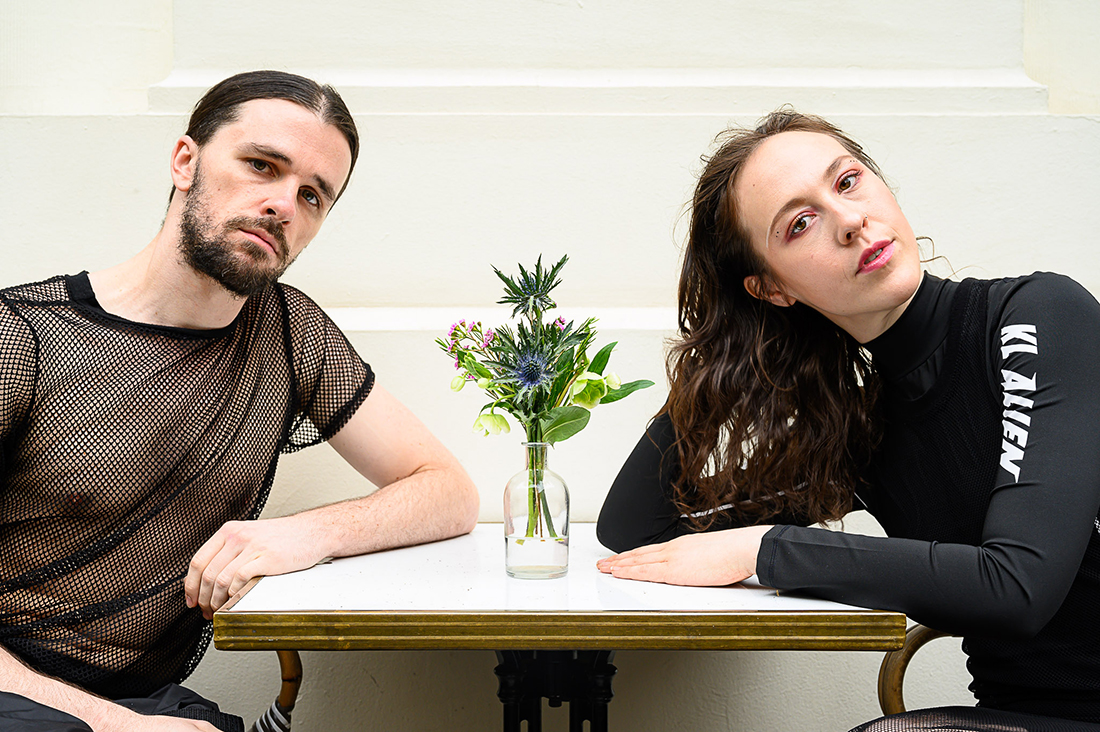
HS: In the bio on your site, you mention “physiological centering” as a component of your work, what does having a physical body mean in a digital age?
AT: A lot of the work that we’re making right now is dealing with how we can balance and center being human. We continue to advance technologically; we use technology as a tool to enhance our experience of living. Technology takes on this embodiment. But centering is learning how to sense your internal responses.
TK: […] The song structures are meant to have this level of ambiguity. The structure is nontraditional, so maybe it keeps the listener engaged, more of a journey in sound rather than verse and chorus, verse and chorus. You can feel a response to the sound in the body, maybe in your chest, for example. At the same time, we use drum machines and music made through computers that are inherently disembodied.
HS: How do you see the direction of technology influencing the arts?
AT: With our residency at Carnegie Museum of Art right now, a lot of the focus is on creative technology, and programming. We’re seeing a lot of great interdisciplinary collaborations that are working with technology in a way that’s not a fetish.
HS: Fetish. How do you mean that?
AT: Technology in the arts can so often go in the direction of like, “Ooh look at this new technology!” without exploring the why or the how. We want to come from an angle that’s versatile in relating the body and technology.
TK: The human enmeshment with technology is going to continue to happen. None of us can stop that. Rather than use advances in technology to further diminish people’s interpersonal skills and connections, how can we infiltrate those technologies, and help people keep the human connection? Eye contact, skin-to-skin touch. A lot of the VR world is “shoot ‘em up” video games and action-packed explosions, but there’s also work going on relating to empathy and ethics. It’s a new frontier for us all.
AT: […] We can envision and actually create a totally new space, especially in virtual and augmented realities. So then, there is this capacity to potentially… While we exist in this reality, we can reflect in another. A lot of new technology is for media and military purposes, but what I see these artists doing… they’re building amazing new realities, to heighten specific perspectives.
TK: And desexualize the word “intimacy.”
AT: Finding ways where we are not objectifying ourselves as dancers but creating interactive space for the audience. We’re working on a VR piece between two dancers and one observer, where the observer uses their body to illuminate the space around them, and then eventually they create a portal into the “real world” where they notice they’re dancing, they’ve been dancing with the two dancers the whole time.

HS: That’s a fascinating application for this technology. I saw some of your older music videos and the visuals are very sensual, very warped depictions of the human body. Can you explain how those videos, for example, “body, my body,” tie into the narrative of Slowdager’s musical style?
TK: Yes. There’s these landscapes of trees and forests, and you zoom out, and that’s actually inside of us. We can talk about the body as a landscape, the simplicity of that concept, and how broad it can become. Anna and I really like the idea of distortion. Letting bodies be fragmented, or liquefied, to touch upon the many emotional landscapes we carry. How we share the experience of living in these bodies but oftentimes try to be on our best utilitarian behavior. “Everything’s fine! It’s all great!” Really, you might not be doing great.
AT: The lyrical content came out of a lot of writing from experiences in my past of body dysphoria, eating disorder stuff, and a way to find control in this world. I feel very strongly about acknowledging the shadow as a way of becoming a whole person. In that way, we play with a lot of destruction and fragmentation. The song came out of the feeling that your body isn’t going to just disappear in one instant. That you can build something with your body as you become aware of it.
TK: And how it can be a place to return to in the face of all this uncertainty, questions that cause anxiety, that we can never have answers to. We can at least say “I’m here in this body.”
HS: What does the future hold for slowdanger?
AT: Our residency at the Carnegie Museum of Art is putting on “Performers at Play” between June and September, culminating with an event on September 19th at the Kelly Strayhorn Theater’s Alloy Studios.
TK: And we’ve developed a new evening-length, multimedia dance-performance work with this LED light sculpture that responds to our motions and our placement on stage. That one is called “empathy machine” and it premieres in Pittsburgh on August 30th and 31st, and it will tour to New York (date TBD) and Washington, D.C. in October.
AT: We’re making new music, too. We’ve released some last summer. We’re trying to take it slow.
photos by Alana Mayer